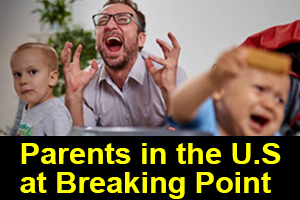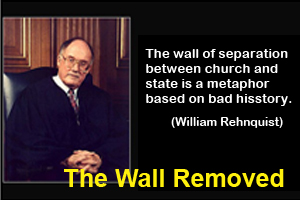

What Is Fascism?
By Jessie Szalay, Live Science Contributor |
January 24, 2017 11:14pm ET
Fascism is a complex ideology. There are many definitions of fascism; some people describe it as a type or set of political actions, a political philosophy or a mass movement. Most definitions agree that fascism is authoritarian and promotes nationalism at all costs, but its basic characteristics are a matter of debate.
Fascism is commonly associated with German Nazi and Italian regimes that came to power after World War I, though several other countries have experienced fascist regimes or elements of them. Adolf Hitler in Germany, Benito Mussolini in Italy, Francisco Franco in Spain and Juan Perón in Argentina were well-known fascist leaders of the 20th century. [Dictator Deaths: How 13 Notorious Leaders Died]
Robert Paxton, a professor emeritus of social science at Columbia University in New York who is widely considered the father of fascism studies, defined fascism as "a form of political practice distinctive to the 20th century that arouses popular enthusiasm by sophisticated propaganda techniques for an anti-liberal, anti-socialist, violently exclusionary, expansionist nationalist agenda."
Climate Change is Making Sharks Right-Handed
Warming oceans change the way animals develop, but will it also change their behavior? Scientists incubated 12 Port Jackson sharks in special tanks designed to simulate hot, end-ofcentury temperatures to find out.
Other definitions, Paxton said, rely too heavily on documents that Mussolini, Hitler and others produced before they came to power. Once in power, fascists did not always keep their early promises. As the American Historical Association put it, speaking of fascism in Italy, "The proclaimed aims and principles of the fascist movement are perhaps of little consequence now. It promised almost everything, from extreme radicalism in 1919 to extreme conservatism in 1922."
Lachlan Montague, a Melbourne, Australia-based writer and researcher of fascism, economic history and the interwar years, told Live Science, "Fascism is definitely revolutionary and dynamic." He said that some definitions of fascism, such as Zeev Sternhell's description of it as a "form of extreme nationalism" in "Neither Right Nor Left"(Princeton, 1995), are too broad to be useful.
Though fascism can be difficult to define, all fascist movements share some core beliefs and actions.
Fascism's core elements
Fascism requires some basic allegiances, such as to the nation, to national grandeur, and to a
master race or group. The core principle — what Paxton defined as fascism's only definition of morality — is to make the nation stronger, more powerful, larger and more successful. Since fascists see national strength as the only thing that makes a nation "good," fascists will use any means necessary to achieve that goal.
As a result, fascists aim to use the country's assets to increase the country's strength. This leads to a nationalization of assets, Montague said, and in this, fascism resembles Marxism. [What are the Different Types of Governments?] ]
"If Marxism was meant to become a magnitude of countries sharing assets in an economic idea, fascists tried to do the same thing within a country," he said.
Guided by the principle of extreme nationalism, fascist regimes tend to perform similar actions, though the particulars differ, author George Orwell wrote in his essay "What Is Fascism?" According to Paxton, these regimes excel at propaganda and make use of grand gestures, such as parades and leaders' dramatic entrances. Fascists scapegoat and demonize other groups, though those groups differ by country and time. That is why the German Nazi regime demonized Jews and others, while Mussolini's Italian regime demonized Bolsheviks. (Mussolini worked regularly with Jews, and his mistress and biographer was Jewish. Because of his alliance with Hitler, he did eventually incorporate anti-Semitic components into his regime, but overall he differed from Hitler on the subject of biological racism.)
Paxton, author of several books, including "The Anatomy of Fascism (Vintage, 2005), said fascism is based more on feelings than philosophical ideas. In his 1988 essay "The Five Stages of Fascism "published in 1998 in the Journal of Modern History, he defined seven feelings that act as "mobilizing passions" for fascist regimes. They are:
- The primacy of the group. Supporting the group feels more important than maintaining either individual or universal rights.
- Believing that one's group is a victim. This justifies any behavior against the group's enemies.
- The belief that individualism and liberalism enable dangerous decadence and have a negative effect on the group.
- A strong sense of community or brotherhood. This brotherhood's "unity and purity are forged by common conviction, if possible, or by exclusionary violence if necessary."
- Individual self-esteem is tied up in the grandeur of the group. Paxton called this an "enhanced sense of identity and belonging."
- Extreme support of a "natural" leader, who is always male. This results in one man taking on the role of national savior.
- "The beauty of violence and of will, when they are devoted to the group's success in a Darwinian struggle," Paxton wrote. The idea of a naturally superior group or, especially in Hitler's case, biological racism, fits into a fascist interpretation of Darwinism.
Once in power, "fascist dictatorships suppressed individual liberties, imprisoned opponents, forbade strikes, authorized unlimited police power in the name of national unity and revival, and committed military aggression," Paxton wrote.
Economics of fascism
The economics of fascism are complicated, Montague said. Fascist governments' purported goal was autarky, or national self-sufficiency. In the 1920s and 1930s, fascist leaders pitched this as an effective middle ground between bourgeois, profit-oriented capitalism and revolutionary Marxism that would dismantle many social institutions and persecute the bourgeoisie. The Library of Economics and Liberty defined fascism's economic practices as "socialism with a capitalist veneer." Paxton said fascism claims to eliminate the private sphere, though that does not happen in reality.
To better understand fascism's economic structure, Montague suggested looking at who benefited from it. "Hitler was heavily backed by the wealthy elite from very early on. Big business (BMW, Bayer, etc.) received slave labor, government contracts and so on," Montague said. Things were more complicated in Italy, where the poor benefitted marginally at the beginning of Mussolini's regime but suffered as his positions changed.
In Germany and Italy, fascist government cartels determined many aspects of commerce, finance, agriculture and manufacturing, and made decisions according to what would further the state's power; however, they also allowed the conservative business elite to maintain property and increase their wealth. The cartels forcibly lowered wages and paid the workers with national pride.
One element of fascism is collaboration with capitalists and the conservative elite. Fascists, even when they start out with radical ideas, always collaborate to move in the direction of protecting private property, Paxton told Live Science. This is, however, an awkward alliance, he said.
"Conservatives are basically people of order who want to use things like the church and property to maintain an existing social order, whereas fascists are revolutionists who will break up social institutions if they think it will bring national power or grandeur or expansion," he said. "In Nazi Germany, the businessmen were not enthusiastic about Hitler, because he had anti-capitalist ideas in the beginning. But then they discovered that they had a great deal in common. They made an alliance, but they often stepped on each other's toes … and on July 20, 1944, the conservatives tried to assassinate Hitler. There is always tension between the two movements." Why is fascism so hard to define?
"Being asked to define fascism is probably the scariest moment for any expert of fascism," Montague said.
In 1944, while much of the world was still influenced by fascist regimes, Orwell said that fascism is extremely difficult to define. In his "What Is Fascism?" essay, he said that much of the trouble was that fascist regimes differ wildly in many ways. "It is not easy, for instance, to fit Germany and Japan into the same framework, and it is even harder with some of the small states which are describable as fascist," Orwell wrote.
Fascism always takes on the individual characteristics of the country it is in, leading to very different regimes. For instance, Paxton wrote in "The Five Stages of Fascism" that "religion … would play a much greater role in authentic fascism in the United States" than it would in the more secular Europe. National variants of fascism differ more broadly than national variants of, for instance, communism or capitalism, Paxton said.
Further complicating matters, nonfascist governments have often mimicked elements of fascist regimes to give the appearance of force and national vitality, Paxton said. For example, mass mobilizations of citizens in colored shirts do not automatically equate to a fascist political practice, he said.
The word's prevalence in common vernacular also causes definition problems. "As of now, the term 'fascist' has been used as an insult so much [that] it has diluted the meaning, and in particular the evil nature the word carries," Montague explained.
Unlike most other political, social or ethical philosophies — such as communism, capitalism, conservatism, liberalism or socialism — fascism does not have a set philosophy. As Paxton wrote, "There was no 'Fascist Manifesto,' no founding fascist thinker."
Setting the stage for fascism
Throughout 20th-century history, fascist regimes have required certain sociocultural and political situations to rise. It is also worth noting that many countries, such as Britain in the 1920s and 1930s, have seen fascist ideas increase in popularity without regimes coming to power or fascist parties becoming star political players.
First and foremost, fascist regimes in the 20th century have required extreme national crises to gain popularity and power. After defeat in World War I, many in Germany and Italy were anxious about the culture of their countries. They had been promised national glory and expansion, and felt shame and frustration with the defeat, Montague said.
"The First World War created a large number of disenchanted men … who had been on the front line of war, seen a lot of death, got used to it, and did not see life as valuable like people who have not been to war do," Montague explained.
Fascism requires a general belief that the standard government parties and institutions are incapable of improving the national situation, he said. In early 20th-century Europe, World War I increased popular distrust of government. Veterans "had been awfully betrayed by their own politicians, who had recklessly sent them to die," Montague said.
This cynicism about government combines with what Montague calls a "fervent but vulnerable national identity." For instance, Italy was a small nation that had once ruled much of the known world but no longer did. Many Germans felt the Treaty of Versailles was suppressing them. In Australia, many felt that the country should wield more power than it did. The United Kingdom was beginning to see itself as a fading power.
For a fascist party to become powerful, the combination of a strong national identity and disenchantment with government still needs a catalyst to make regular people side with vocal fascists, Montague said. In Germany, and to an extent Italy, this catalyst was the Great Depression, he said.
The Great Depression and WWI wreaked havoc on the German economy. "The war had unleashed inflation, and everyone who had savings or was living on a fixed income, like retired people, saw their money dwindling away," said Paxton. People felt desperate, ashamed and lost, he said.
In his "Five Stages" essay, Paxton said that fascism could appear only when a society has known political liberty and when democracy is established enough that the people can be disillusioned with it. Italy had a series of weak, revolving-door governments. Germany had no effective parliamentary majority for three years before Hitler was named chancellor. Two main solutions to the problem of ineffective government, suffering people and national humiliation were proposed: communism and fascism.
Paxton stressed this point: "The rise of fascism is not really comprehensible without paying attention to the rise of communism," he said. "In the 20th century, they were the two movements that proposed to set democracy aside and replace it with something else in order to make the country stronger."
In both struggling Germany and Italy, the left — consisting of the communists and socialists — was gaining traction. In Italy, especially, it appeared that a socialist revolution was imminent. But the existing government and conservative capitalist elites looked upon communism and socialism unfavorably.
Paxton identified fascist pandering to conservatives early in the movement as another factor in setting the stage for a fascist regime. "The only route available to fascists is through conservative elites," he wrote.
In Germany and Italy, existing governments decided to align themselves with fascists. "The fascist parties came to the attention of the public as the most violent and rigorous opponents to socialism," Paxton said. "The heads of state in both countries offered fascists the position of head of government, because the other options, the traditional parliamentary parties, had failed. Both fascism and communism proposed violent solutions, and one would win by destroying the other," Paxton said.
Existing governments, having aligned themselves with the fascists and afraid of a socialist revolution, refused to work with the left. This led to political deadlock, another of the factors Paxton said are required for fascism to come to power.
History of fascism
Mussolini coined the term "fascism" in 1919. He had been a communist but changed his opinions in the wake of World War I, Montague said. The word "fascism" comes from the Italian "fascio," meaning a bundle or group, and is considered a term for a militant brotherhood. According to the history department at King's College, the word "fasces" means an ax tightly bound with sticks, which became a symbol of the fascist movement.
Mussolini's 1919 fascism mixed extreme nationalist expansion with social programs like women's suffrage and workers' power. Fascist leaders quickly moderated their message, allied with conservatives and the existing governments and gained power. Fascist movements appeared in other European countries that were struggling after World War I or nervous about socialism. Montague identified the Australian New Guards, the British Union of Fascists and, of course, the German National Socialist German Workers' Party (Nazi Party) as prominent European fascist parties.
According to the American Historical Association, in Italy in 1922, strong-armed squads known as the Blackshirt Militia, who were financed by industrialists, fought socialist farmer organizations, conducted raids on socialist newspapers and occupied socialist-led towns. They threatened to march on Rome in 1922. The government tried to placate Mussolini by naming him prime minister, but in 1925, he established himself as dictator. What followed was violent suppression of dissent; the deification of Mussolini; violent expansion into Ethiopia, Albania and other countries; and in 1939, alliance with Nazi Germany and participation in World War II.
Hitler learned many lessons from Mussolini, including the importance of propaganda and violence. In the 1920s, he led his Nazi Party to prominence through dramatic speeches, grand entrances and passionate rhetoric against Jews, Marxists, liberals and internationalists, Paxton wrote. In January 1933, Weimar Republic President Paul von Hindenburg named Hitler chancellor, hoping Hitler would stop the growing Communist Party. By the summer, Hitler's rule had become a personal dictatorship.
In violation of the Versailles Treaty, Hitler rearmed Germany and began invading neighboring lands. The invasion of Poland on Sept. 1, 1939, kicked off World War II and the Holocaust.
European fascist ideas inspired regimes throughout Latin America, including in Bolivia and Argentina. "These countries also had a very difficult time during the Depression, and ordinary middle-class parties operating parliamentary systems were notably unsuccessful," Paxton said.
"Argentina had been a wealthy country in 1900, exporting grain and meat, but the bottom fell out of those markets and Argentina became a poor country. It was like losing a war. They turned to a military leader who had populist appeal."
Spain and Portugal were dictatorships until 1975, but those governments were a mix of conservative and fascist parties.
Fascism today
After World War II, fascism largely fell out of fashion in Europe and North America. It became a go-to political insult, resulting in overuse and reduced meaning, said Paxton. Nevertheless, there have been growing fascist or proto-fascist movements in Europe and North America for the last few decades, Paxton said. "As Communism declined after 1989, proto-fascism became the main vehicle for protest voting in Europe," Paxton wrote.
The rise of populism across Europe and the United States in the 2000s has caused many to wonder if fascism is taking hold again. However, Paxton said he does not think fascism is on the rise in the United States.
"What I think we have in this country is much more traditional conservatism," he said. "The basic social political program is individualism, not for everyone, but [for] entrepreneurs. It supports the right of businesspeople to seek maximum profit without rules of regulations.
"We've got an oligarchy [Defined by the Oxford English Dictionary as "a small group of people having control of a country or organization"] that has learned some clever maneuvers to win popular support with rhetorical devices that resemble fascism," Paxton continued. "For instance, the United States is in significantly better shape than Germany or Italy were after World War I. However, some politicians have convinced many Americans that the situation is similarly dire."
Download







